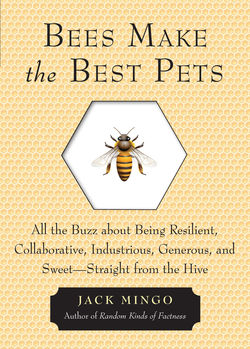Читать книгу Bees Make the Best Pets - Jack Mingo - Страница 11
На сайте Литреса книга снята с продажи.
Bee Team #2: Hive Got a Job for You
ОглавлениеNot every bee can hang around laying eggs or anticipating sex. In fact, worker bees normally don't have the opportunity to do either one. The workers, all female, live a life of celibacy and constant work, literally from the moment they're born until the moment they're thrown out of the hive. It's almost an extreme prototype for the modern corporation.
But it's not as if there are no promotion possibilities in the HiveCo Corporation. Every worker bee goes through a gamut of jobs in its short life:
Custodian: As soon as a worker bee eats her way out of her brood cell, she has a job: cleaning out the cell she just came out of, making it ready for the next egg.
Nursemaid: Next job is taking care of the grubby little babies, the larvae: feeding them, keeping them the right temperature, dosing them with royal jelly, and sealing them up into their cells with a mix of wax and pollen.
Warehouse worker: Receiving, moving around, and storing the honey and pollen is a full-time job.
Heating, cooling, and ventilation: Bees flapping their wings as they work creates a constant stream of fresh air circulating through the hives. On hot days, lines of bees wind throughout the hive, all facing the same direction, holding tight and buzzing their wings as if flying, creating a small wind that blows in through the entrance, around the hive, and out again. Some bees hold small drops of water to cool the air further. On cold days, bees crowd close in the nursery, flexing their wing muscles to generate heat, keeping themselves, the queen, and the babies warm.
TACTICAL PROCEDURE, BEE VS. PREDATOR
DEFCON 4: Wary monitoring from hive.
DEFCON 3: Menacing buzzes around intruder's head.
DEFCON 2: Repeated head-butting impacts against intruder's face and head.
DEFCON 1: Commencement of stinging.
Guards: Standing just inside the entrances of a hive, the guards act like bouncers in a club, keeping out unauthorized bugs. When threatened by something bigger, they fearlessly fly forth to defend the hive from birds and animals of all kinds, including people, bears, elephants, and pretty much anything else that gets too close.
Builders: By the twelfth day of its life, a bee's wax glands begin working, dropping little fish-scale-looking flakes of wax all over the hive, like oversized dandruff. The builders collect the flakes, crawl into unfinished honeycomb cells and shape the wax into cell walls.
Field bees: In what will likely be its last job, the fully mature bee begins going out into the world to collect needed supplies. Most notably nectar and pollen from flowers, of course, but also water for cooling and sticky sap from plants and trees. The latter is the major ingredient of propolis, a sticky filler material bees use to seal up unwanted gaps and holes.
AGING BEES LOSE THEIR HAIR TOO
Here's how to tell a honey bee's age:
1 Where did you find it? If outside the hive, it's at least nine days old. If it's in the hive but outside the ring of pollen, it's at least four or five days old. If it's inside the circle, it's probably a nursemaid, which is usually only a few days old, unless it's the big one, the laying queen. She can be anywhere from a few weeks to several years old.
2 If the bee is extremely fuzzy, it's young. If its hair is thin enough that its black body is showing through the down, it's old—probably a month or more. In bee years, during the hard-working summertime, a month is the equivalent of about fifty to sixty human years.
